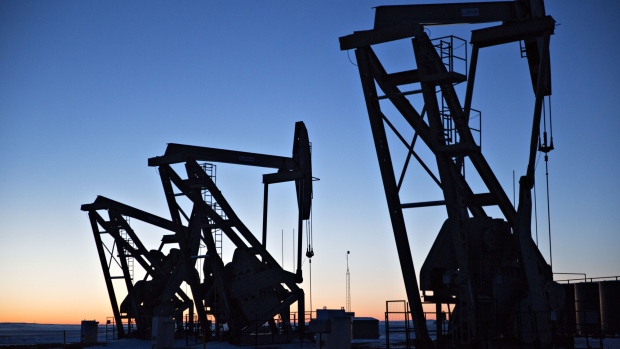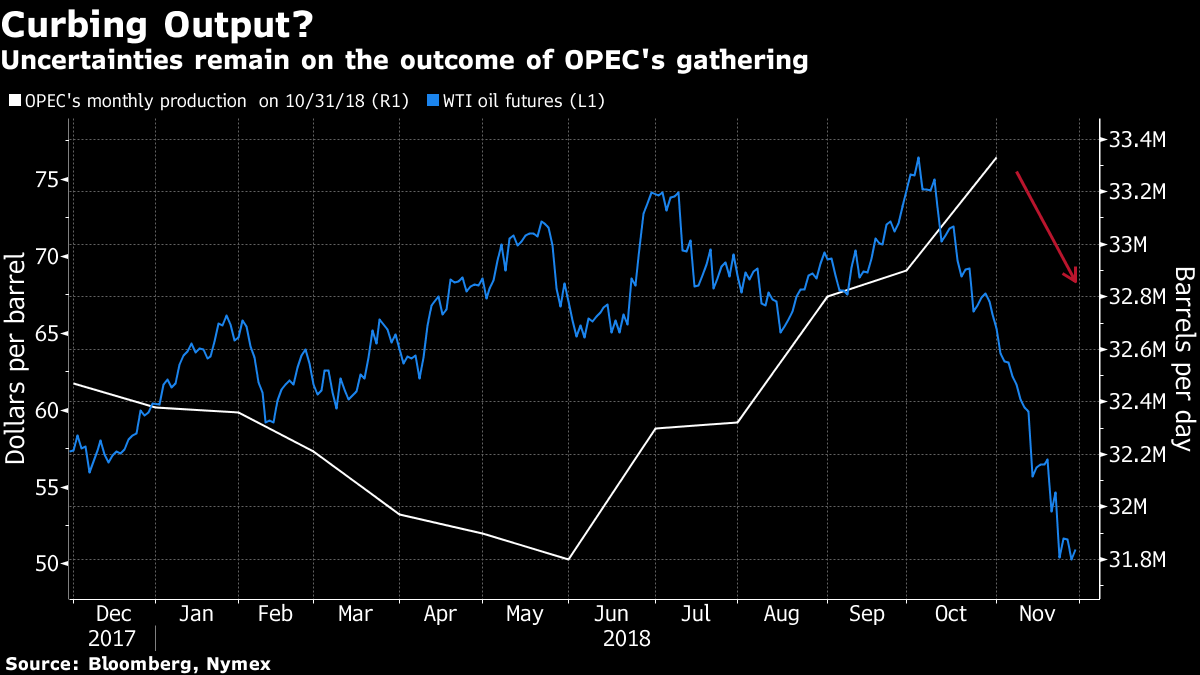Nov 29, 2018
Oil rises near US$51 on report Russia willing to join OPEC curbs
, Bloomberg News

Oil climbed for the first time in three days as Russia expressed a willingness to join Saudi Arabia in curbing global supplies.
Russia wants more predictability and “smooth price dynamics” in world crude markets, Deputy Foreign Minister Sergei Ryabkov said in an interview in Argentina. The remarks presaged a G-20 summit where Russia’s Vladimir Putin and Saudi Arabia’s Mohammed bin Salman are expected to discuss oil supplies ahead of a broader meeting of top petroleum exporters next week.
West Texas Intermediate crude has fallen 21 per cent this month, on track for its its worst monthly showing in a decade. Yet after sliding below US$50 a barrel earlier on Thursday -- a key budgetary marker for U.S. shale drillers -- some traders saw an oversold market, said Bart Melek, head commodity strategist at TD Securities in Toronto.
“Sub-US$50 crude would stress shale producer finances,” Melek said, “suggesting the upward production trajectory could slow.”
For an OPEC live blog with Bloomberg News oil strategist Julian Lee, click here
West Texas Intermediate for January added US$1.16 to settle at US$51.45 a barrel on the New York Mercantile Exchange.
Brent for January settlement, which expires Friday, gained 75 U.S. cents to US$59.51 on London’s ICE Futures Europe exchange. The global benchmark traded at an US$8.06 premium to WTI. The more-active February contract rose 82 U.S. cents to US$59.51.

Putin praised the Saudi crown prince on Wednesday and said Moscow is ready to cooperate further. He also said crude around US$60 a barrel is “balanced and fair” and well above the level needed to keep his government’s budget in surplus. By contrast, Saudi Arabia needs oil at more than US$80 a barrel to balance its budget.
“Nobody is interested in either an artificial deficit or an oversupply,” Ryabkov said.
Oil-market news Gasoline futures gained 4.1 per cent to US$1.4547 a gallon. WTI’s 14-day relative strength index indicates that the U.S. marker has traded in oversold territory every day this month. The entire Brent futures curve has slumped into a bearish contango structure, indicating excess supply. China is buying the dip in oil prices in potentially large volumes, shipping and trade data suggest.



